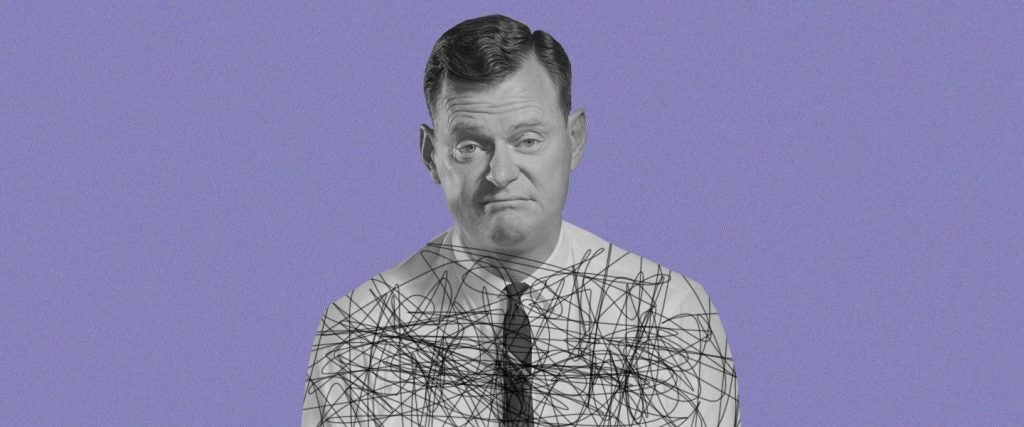Most people who know me well would generally describe me as an anxious person. As much as I agree with their assessment now, it took me more than a decade to realize that what I was experiencing was anxiety. That’s because when my stomach hurt, or I felt tightness in my chest, or when I failed to fall asleep at night — my mind always felt fine. It was my body that was the problem.
But you only have to look as far as the r/Anxiety subreddit to find plenty of others who experience physical symptoms of anxiety, rather than mental ones. In a recent thread, user danisomi explained how their symptoms, like heart palpitations, linger even when they’re not feeling mentally stressed about anything. Others shared similar experiences. “My physical symptoms have lasted for months,” Jamessmith199478 commented. “I don’t feel very anxious, but I’m absolutely drained and I have headaches and dizziness & this overwhelming exhaustion. It’s very draining.”
As clinical psychologist Max Maisel confirms, anxiety is “absolutely experienced in both the mind and the body,” but where it’s felt varies from person to person. And regardless of whether we’re aware of it or not, our physical anxiety still always starts in the brain — specifically the amygdala, a small, almond-shaped region that serves as an alarm bell for external threats.
“Unfortunately, it’s easy for the amygdala to do its job too well, and it can begin to send danger signals even when there isn’t an actual threat,” Maisel tells me. In particular, it triggers the sympathetic nervous system, or fight-or-flight mode, causing brain chemicals like adrenaline and cortisol to “create intense physiological symptoms of anxiety in our bodies.” Such physical reactions are different for everyone, but they can include a fast heartbeat, shakiness, restlessness, stomach aches and tension, among other things.
But why do some people feel physically anxious when they’re not mentally stressed out? As Maisel notes, the amygdala is incredibly sensitive and sometimes can be triggered without us knowing it. Another possibility is that people become so resistant to the idea of being anxious or panicked from past experiences that it can be more difficult to identify it until physical symptoms emerge.
That’s why mindfulness experts like Kim Trimmer, a yoga practitioner and therapist, believe “labeling this either physical or mental presents a conundrum.” Instead, she prefers to think of anxiety as a condition of the mind and body. While this may make it seem like anxiety is coming at you from every direction, it’s not quite as overwhelming as it sounds. In fact, it’s because anxiety affects both the mind and body that there are multiple ways to combat it — two of which Trimmer refers to as bottom-up and top-down processing.
Say, for instance, you experience a stressful situation like an argument at work, but you remove yourself from it by going for a rage-walk around the block or doing some breathing exercises in the parking lot. In this scenario, you’re treating the physical symptoms of anxiety so the mental symptoms don’t cause you to have a panic attack or lash out. That’s bottom-up processing.
By contrast, when you work from the top-down, you control your thoughts to alleviate your physical symptoms — whether that’s through meditation, medication or cognitive behavioral therapy. That said, given the lack of predictability of our minds — as well as the amygdala’s tendency to overreact — top-down methods of dealing with anxiety can be more challenging to harness.
This may also be why some people, myself included, have come to terms with experiencing anxiety in our bodies, and prefer to focus on treating the physical symptoms first. Hey, they don’t say “Bottoms up!” for nothing, right?

